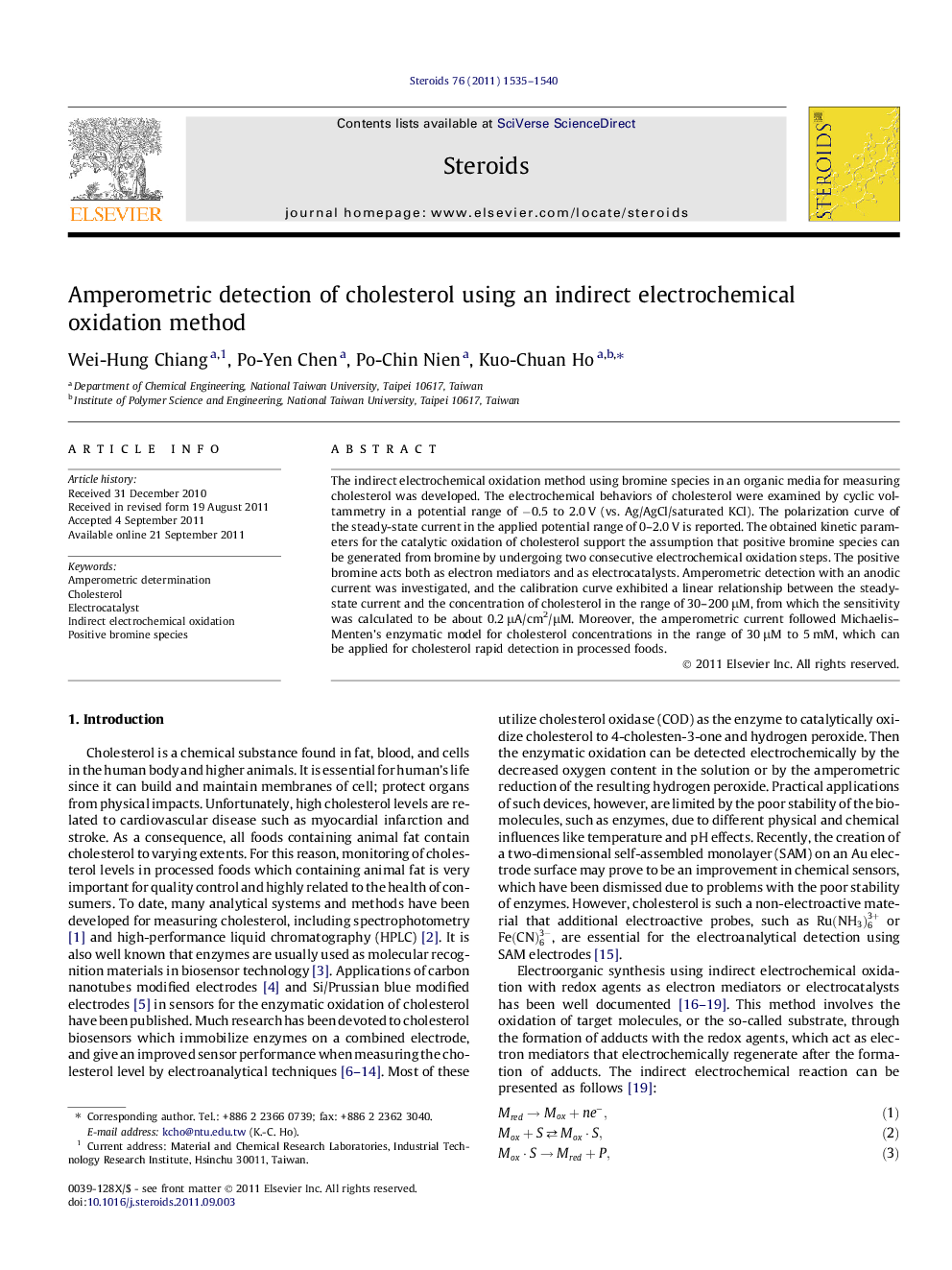| Article ID | Journal | Published Year | Pages | File Type |
|---|---|---|---|---|
| 2028305 | Steroids | 2011 | 6 Pages |
The indirect electrochemical oxidation method using bromine species in an organic media for measuring cholesterol was developed. The electrochemical behaviors of cholesterol were examined by cyclic voltammetry in a potential range of −0.5 to 2.0 V (vs. Ag/AgCl/saturated KCl). The polarization curve of the steady-state current in the applied potential range of 0–2.0 V is reported. The obtained kinetic parameters for the catalytic oxidation of cholesterol support the assumption that positive bromine species can be generated from bromine by undergoing two consecutive electrochemical oxidation steps. The positive bromine acts both as electron mediators and as electrocatalysts. Amperometric detection with an anodic current was investigated, and the calibration curve exhibited a linear relationship between the steady-state current and the concentration of cholesterol in the range of 30–200 μM, from which the sensitivity was calculated to be about 0.2 μA/cm2/μM. Moreover, the amperometric current followed Michaelis–Menten’s enzymatic model for cholesterol concentrations in the range of 30 μM to 5 mM, which can be applied for cholesterol rapid detection in processed foods.
► The positive bromine acts both as electron mediators and as electrocatalysts for cholesterol oxidation. ► The amperometric detection of cholesterol concentration in the range of 30–200 μM has been achieved. ► The amperometric detection of cholesterol was attained with a sensitivity of 0.2 μA/cm2/μM. ► The amperometric current followed Michaelis-Menten’s enzymatic model in the range of 30 μM–5 mM cholesterol.
